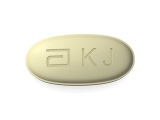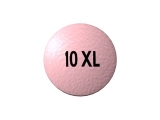Printable list of pharmacy abbreviations
In the fast-paced world of pharmacy, clear and concise communication is essential to ensure patient safety and accurate medication administration. One way that pharmacists and healthcare professionals efficiently communicate is by using abbreviations. These abbreviations help to save time and space when documenting and communicating about medications, but they can also be confusing and easily misunderstood.
This printable list of pharmacy abbreviations serves as a helpful tool for both pharmacy students and healthcare professionals alike. It includes a comprehensive compilation of commonly used pharmacy abbreviations, organized alphabetically for easy reference. With this list, pharmacists and pharmacy technicians can ensure that their notes and prescriptions are easily understood by colleagues and patients, reducing the risk of medication errors.
Furthermore, the list includes important warnings and precautions about the appropriate use of these abbreviations. It highlights instances where abbreviations can be misinterpreted and lead to serious medication errors. By raising awareness about potential pitfalls, this printable list aims to promote safe and effective communication in the pharmacy setting.
What are Pharmacy Abbreviations?
Pharmacy abbreviations are shorthand notations that are commonly used in the field of pharmacy to convey information quickly and efficiently. These abbreviations are used in various contexts, such as prescriptions, medication orders, medical charts, and drug labels. Understanding and interpreting these abbreviations is crucial to ensuring the accuracy and safety of medication use.
Pharmacy abbreviations can be categorized into different types:
- Medication abbreviations: These abbreviations represent specific medications or drug classes. Examples include "APAP" for acetaminophen and "ACEI" for angiotensin-converting enzyme inhibitor.
- Dosage abbreviations: These abbreviations indicate the amount or strength of a medication. Examples include "mg" for milligram and "mL" for milliliter.
- Route of administration abbreviations: These abbreviations indicate how a medication is to be administered. Examples include "PO" for oral, "IV" for intravenous, and "IM" for intramuscular.
- Frequency abbreviations: These abbreviations signify how often a medication is to be taken. Examples include "QD" for once daily, "BID" for twice daily, and "TID" for three times daily.
- Medical abbreviations: These abbreviations encompass general medical terms that may be relevant to pharmacy practice. Examples include "CNS" for central nervous system and "PRN" for as needed.
It is important to note that while pharmacy abbreviations can save time and space, their use can also introduce the risk of misinterpretation or confusion. For this reason, it is recommended that healthcare professionals and patients familiarize themselves with commonly used abbreviations and take steps to ensure clear communication.
A printable list of pharmacy abbreviations can be a helpful reference tool for healthcare professionals, pharmacists, and patients alike. It can serve as a quick guide to understanding abbreviations commonly encountered in pharmacy practice and promote safe and effective medication use.
Pharmacy Abbreviations and Their Meaning
1. Rx
Meaning: Prescription
The abbreviation "Rx" stands for prescription, which indicates that a medication cannot be dispensed without a valid prescription from a healthcare professional.
2. OTC
Meaning: Over-the-Counter
OTC refers to medications that can be purchased without a prescription. These medications are typically used to treat minor ailments and do not require the supervision of a healthcare professional.
3. BID
Meaning: Twice a Day
BID is an abbreviation for the Latin term "bis in die," which translates to "twice a day." This abbreviation is commonly used to indicate the frequency at which a medication should be taken.
4. QD
Meaning: Once a Day
QD is short for the Latin term "quaque die," which means "once a day." This abbreviation is frequently used to indicate that a medication should be taken once daily.
5. PRN
Meaning: As Needed
PRN is an abbreviation of the Latin term "pro re nata," which translates to "as the thing is needed." This abbreviation is often used to indicate that a medication should be taken only when necessary.
6. NPO
Meaning: Nothing by Mouth
NPO is derived from the Latin phrase "nil per os," which means "nothing by mouth." This abbreviation is commonly used to indicate that a patient should not consume any food or drink for a specified period of time, typically before a medical procedure.
7. STAT
Meaning: Immediately
STAT is an abbreviation for the Latin term "statim," which translates to "immediately" or "at once." This abbreviation is often used in medical settings to indicate that a medication or intervention should be performed without delay.
8. Hs
Meaning: Bedtime
The abbreviation "Hs" stands for "hora somni," which means "at bedtime." This abbreviation is commonly used to indicate that a medication should be taken before going to sleep.
9. SOS
Meaning: If Necessary
SOS is an abbreviation for the Latin term "si opus sit," which translates to "if necessary." This abbreviation is often used to indicate that a medication should be taken only if the symptoms or condition worsen.
10. BSA
Meaning: Body Surface Area
BSA is an abbreviation used to describe the measurement of the surface area of a person's body. It is commonly used in medication dosages that are calculated based on body surface area rather than weight.
In conclusion, familiarizing oneself with these pharmacy abbreviations and their meanings can help healthcare professionals communicate more efficiently and accurately when prescribing or dispensing medications.
How to Use a Printable List of Pharmacy Abbreviations
1. Familiarize Yourself with the Common Abbreviations
Before using a printable list of pharmacy abbreviations, it's important to familiarize yourself with the common abbreviations used in the field of pharmacy. This will help you read and understand prescriptions, medical charts, and other pharmacy documentation more efficiently. The printable list of pharmacy abbreviations can serve as a quick reference guide to refresh your memory.
2. Print and Keep the List Handy
Print out a copy of the list of pharmacy abbreviations and keep it in a convenient location, such as your desk or clipboard. Having a physical copy easily accessible can save you time and effort when you come across an unfamiliar abbreviation. You can also store a digital copy on your phone or tablet for quick access on the go.
3. Use the List as a Reference Tool
Whenever you encounter an abbreviation that you don't recognize or can't remember, refer to the list for clarification. Look for the abbreviation in alphabetical order, and find its corresponding meaning. Pay attention to any accompanying notes or additional information provided in the list to ensure you understand the context in which the abbreviation is used.
4. Update the List Regularly
Pharmacy abbreviations may evolve and change over time, so it's important to update your list regularly to ensure its accuracy. Stay up to date with any new abbreviations that may be introduced in the field of pharmacy and make revisions to your list accordingly. Keeping an updated list will ensure that you have the most current information at your fingertips.
Final Thoughts
Using a printable list of pharmacy abbreviations can be a valuable tool for pharmacists, pharmacy technicians, and other healthcare professionals. It can help improve efficiency, reduce errors, and enhance communication within the pharmacy setting. By following these tips, you can effectively utilize the list and improve your overall proficiency in understanding and using pharmacy abbreviations.
Benefits of Using a Printable List of Pharmacy Abbreviations
Increase Efficiency and Accuracy
Using a printable list of pharmacy abbreviations can significantly improve the efficiency and accuracy of medication-related tasks. Pharmacists and pharmacy technicians often need to quickly interpret prescriptions and medication orders, and having a comprehensive list of abbreviations readily available can help them make the correct interpretations without wasting time.
Reduce Errors and Misinterpretations
Pharmacy abbreviations can sometimes be confusing and easily misinterpreted, leading to medication errors. However, by referring to a printable list of abbreviations, healthcare professionals can reduce the risk of errors and misinterpretations. This can improve patient safety and prevent adverse reactions or complications that may arise from medication mistakes.
Enhance Communication and Collaboration
A printable list of pharmacy abbreviations serves as a common reference point for healthcare professionals. It allows them to communicate more effectively and collaborate on patient care. By using standardized abbreviations and ensuring that everyone is on the same page, healthcare teams can better understand each other's notes and instructions, leading to smoother workflows and improved patient outcomes.
Improve Patient Education and Empowerment
When pharmacists provide medication information to patients, they often use abbreviations to convey important details concisely. However, patients may struggle to understand these abbreviations and their meanings. By providing patients with a printable list of pharmacy abbreviations, they can have a better grasp of the information provided to them. This improves patient education and empowerment, enabling them to actively participate in their healthcare decisions.
Facilitate Training and Education
For pharmacy students, technicians, and other healthcare professionals, a printable list of pharmacy abbreviations can be a valuable tool for training and education. It serves as a quick reference guide during the learning process, helping to familiarize individuals with the commonly used abbreviations in the field. This can accelerate the training process and ensure that future healthcare professionals are well-prepared to navigate the pharmacy setting.
Common Mistakes to Avoid with Pharmacy Abbreviations
Poor Handwriting
One of the most common mistakes made with pharmacy abbreviations is poor handwriting. Pharmacies receive numerous prescriptions daily, and it's crucial for pharmacists and pharmacy technicians to be able to read and understand the prescriptions accurately. However, if the handwriting is illegible or messy, it can lead to confusion and potential medication errors. To avoid this mistake, it's important for healthcare professionals to write legibly and clearly when using pharmacy abbreviations.
Using Ambiguous Abbreviations
Another common mistake is using ambiguous abbreviations that can be misinterpreted. For example, abbreviating "daily" as "qd" can be mistaken for "qid," which means "four times a day." Similarly, using the abbreviation "10 mg" without specifying the route of administration can lead to confusion, as it could mean either oral, intravenous, or another route. To prevent these mistakes, healthcare professionals should use standard, approved abbreviations and be clear in their documentation.
Not Checking for Drug Interactions
When using pharmacy abbreviations, it's essential to consider potential drug interactions. Certain abbreviations can have different meanings depending on the context, and this can lead to medication errors. For example, abbreviating "immediately" as "stat" could be mistaken for "st. john's wort," which is a herbal supplement known to interact with many medications. To avoid this mistake, pharmacists and pharmacy technicians must double-check their abbreviations and ensure they are using the correct ones.
Not Seeking Clarification
Lastly, one of the most important things to avoid when using pharmacy abbreviations is not seeking clarification when needed. If there is any confusion or uncertainty regarding an abbreviation, it's crucial to ask for clarification from the prescriber or another healthcare professional. It's better to take the time to confirm the meaning and avoid potential errors than to make assumptions and put patient safety at risk.
In conclusion, by being mindful of poor handwriting, using unambiguous abbreviations, checking for drug interactions, and seeking clarification when needed, healthcare professionals can avoid common mistakes when it comes to pharmacy abbreviations. Clear and accurate communication is essential in the field of pharmacy to ensure patient safety and prevent medication errors.
Where to Find a Printable List of Pharmacy Abbreviations
If you work in the pharmacy field, you know how important it is to be familiar with pharmacy abbreviations. These abbreviations are commonly used in prescriptions and medical documents to convey important information about medications, dosages, and administration instructions. It's crucial to have a comprehensive list of these abbreviations at your disposal to ensure accurate interpretation and communication.
Fortunately, there are several reliable sources where you can find a printable list of pharmacy abbreviations. One of the most trusted sources is the United States Pharmacopeia (USP). The USP is a nonprofit organization that establishes standards for the quality and purity of medicines. They provide a comprehensive list of pharmacy abbreviations that is regularly updated and can be easily accessed on their website. This list is a valuable resource for healthcare professionals and pharmacy students.
Another reputable source for printable pharmacy abbreviation lists is professional pharmacy associations. Many pharmacy associations offer resources and educational materials for their members, including lists of commonly used abbreviations. These lists are often available for download or in print form at conferences, seminars, or through the association's website. Joining a professional pharmacy association can give you access to these valuable resources and keep you updated with the latest abbreviations and industry standards.
In addition to official sources, there are also online platforms and forums where healthcare professionals and students share their knowledge and resources. These platforms often have dedicated sections or threads where people can share and discuss pharmacy abbreviations. These discussions can be a great way to learn about new abbreviations or clarify the meaning of existing ones. Some platforms allow users to create and download printable lists of abbreviations, which can be handy for quick reference.
To summarize, there are several reliable sources for finding a printable list of pharmacy abbreviations. These include organizations such as the United States Pharmacopeia, professional pharmacy associations, and online platforms. By having a comprehensive list of pharmacy abbreviations, you can ensure accurate interpretation and communication in the pharmacy field, ultimately leading to improved patient safety and care.
Follow us on Twitter @Pharmaceuticals #Pharmacy
Subscribe on YouTube @PharmaceuticalsYouTube





Be the first to comment on "Printable list of pharmacy abbreviations"